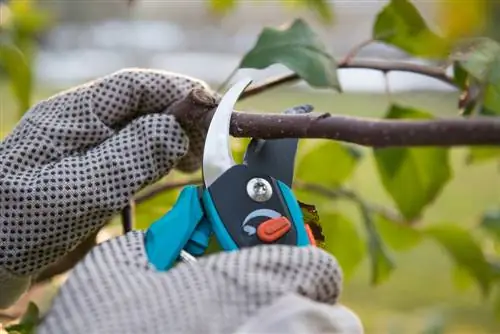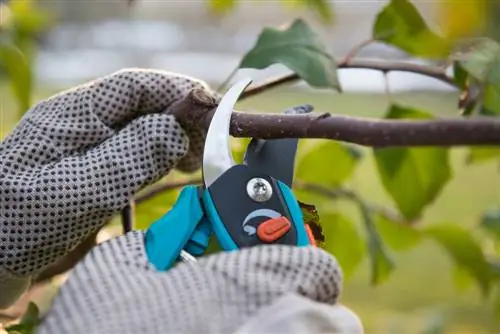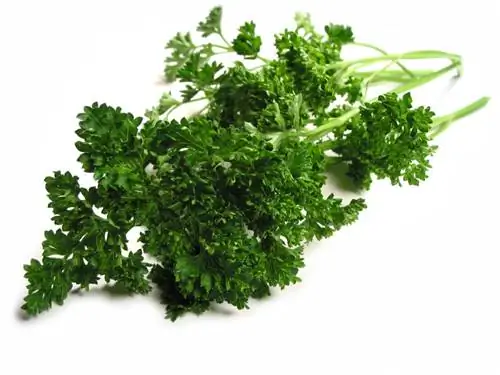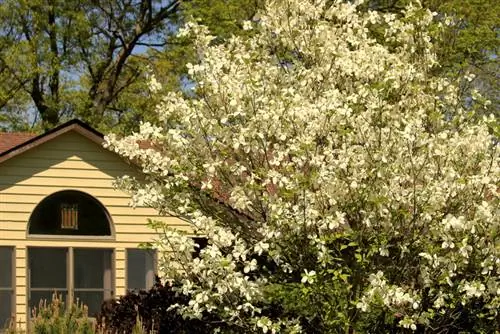- Author admin [email protected].
- Public 2023-12-16 16:46.
- Last modified 2025-01-23 11:22.
Don't cut branches anywhere. A targeted cut guarantees even, vital growth and a tree crown without gaps. These 3 tips explain the most important cutting rules for beginners in a practical and understandable way.

How do I cut branches correctly?
To trim branches properly, pay attention to outer buds and cut slightly diagonally across them. Redirect old branches to young shoots and saw off thick branches in stages. Use appropriate cutting tools and plan cuts carefully to avoid damage.
Cut branches to buds
Leaves, flowers and new shoots sprout from buds. Focus your attention on these nodes of growth when trimming branches properly. A bud must neither be injured nor exceeded by a hook. With this cut you will do it right:
- Locate a bud at the desired intersection that faces outward
- Place the scissor blades above this bud at a distance of 3-5 mm
- Support the branch with your free hand
- Cut the branch slightly at an angle, away from the bud, so that water can drain away easily
Can't you see a bud at the desired intersection? Then look for a sleeping eye as a slight thickening under the bark. The cut brings the inactive bud to life.
Deriving old branches
The basic basics of incision care include the derivation incision. By diverting an old, long branch, you redirect the growth energy to young wood and activate strong shoots. At the same time, no gap can arise in the crown appearance at this point. It's that easy:
- Choose a strong side branch on overly long, old branches
- Cut off old branches just above the branching to the young wood
Please do not cut into the young wood and do not leave a long stub of old wood. So-called coat hooks dry back and serve as a welcome entry point for pathogens on the tree.
Cut thick branches in stages
You cut off branches as thick as your arm gradually. Thanks to this cut, a branch cannot break off and cause serious damage to the tree trunk. How to saw off a branch correctly:
- At a distance of 20-40 cm from the trunk, place the saw on the underside of the branch
- With the leading hand, saw the branch to the middle
- Support the branch with your other hand at a safe distance from the saw blade
- Pull out the saw
- Place the saw blade again on the top of the branch at a distance of 10-20 cm from the cut point (right or left)
- Cut until the branch breaks off
Cut or saw off the remaining branch stump on Astring. Finally, smooth the cut with a sharp, clean knife blade.
Tip
What you cut branches with is just as important as how you do it. Bypass or anvil pruners are suitable for thin branches. For branches with a diameter of 2 to 3 centimeters, two-handed pruning shears are the perfect cutting tool. Models with ratchet gears save energy and are easy on your nerves. From a diameter of 4 centimeters, you can cut branches with a maneuverable folding saw or a powerful hacksaw.






